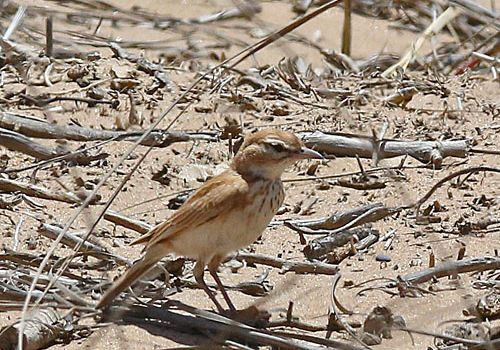
Dune lark
Calendulauda erythrochlamysDune lark
Introduction: Dune larks (Calendulauda erythrochlamys) are endemic to Namibia. They inhabit thinly vegetated dunes in the Namib Desert dune system associated with Bushman grasses and!Nara melons. Observations of this species can be made year-round, with pair members remaining close together.
Distribution: Confined to the dune sea of the Namib Desert from the Kuiseb River, Walvis Bay south to the Koichab River, inland and to the north of Luderitz. Can be observed on Elim Dune near Sesriem Canyon, on the way to Sossusvlei.
Diet: Initially searches for insects on dune slopes before digging for seeds in the soft sand.
Description: Sandy rufous coloured upper parts and wing coverts. Plain face, brown tail and white underparts.
Breeding: Females build a cup-shaped nest mainly from the grass leaves of the Namib Dune Bushman grass (Stipagrostis sabulicola), lined with feathers and reptile skin. Only 1 or 2 oval eggs are laid year-round and incubated by the female for around 14 days.
Size: 18cm.
Weight: 28g.
Klein Windhoek

